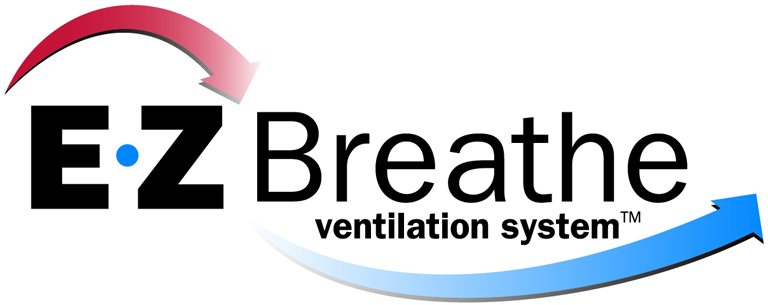Basements are essential components of many homes, providing valuable space for storage, utilities, and recreational activities. However, they are also susceptible to water infiltration, which can lead to a range of problems such as mold growth, structural damage, and compromised indoor air quality. Basement waterproofing is essential for protecting the structural integrity of the home and creating a dry, comfortable living environment. In this article, we’ll explore common basement waterproofing techniques, their benefits, and considerations for homeowners.
1. Exterior Waterproofing
Exterior waterproofing is one of the most effective methods for preventing water intrusion into the basement. This technique involves applying waterproof coatings or membranes to the exterior surface of the foundation walls to create a barrier against water infiltration. Additionally, exterior drainage systems such as French drains or footing drains can be installed to redirect groundwater away from the foundation. Exterior waterproofing is typically done during the construction phase or as part of a renovation project and requires excavation around the perimeter of the foundation.
2. Interior Waterproofing
Interior waterproofing focuses on managing moisture that has already infiltrated the basement. This technique may include installing interior drainage systems, such as drain tiles or sump pumps, to collect and remove water from the basement. Interior sealants and coatings can also be applied to basement walls and floors to prevent moisture penetration. While interior waterproofing does not address the underlying causes of water intrusion, it can help mitigate the effects and prevent damage to the interior of the basement.
3. Crack Injection
Foundation cracks are common entry points for water infiltration into the basement. Crack injection is a technique used to repair these cracks and prevent further water intrusion. Specialized materials such as epoxy or polyurethane resins are injected into the cracks to fill and seal them. This helps prevent water from seeping into the basement and causing damage to the foundation walls. Crack injection is typically done by trained professionals and can be an effective solution for addressing localized water intrusion issues.
4. Interior Drainage Systems
Interior drainage systems are designed to collect and remove water from the basement to prevent flooding and water damage. These systems typically consist of drain tiles or perforated pipes installed along the perimeter of the basement floor. The collected water is then directed to a sump pump pit, where it is pumped out of the basement and away from the foundation. Interior drainage systems are particularly effective in areas with high water tables or frequent rainfall and can help keep the basement dry and free of moisture.
5. Sump Pump Installation
Sump pumps are essential components of basement waterproofing systems, especially in areas prone to flooding or high groundwater levels. A sump pump is installed in a pit excavated in the basement floor, and its primary function is to remove excess water from the basement and discharge it to a designated drainage area. Sump pumps are typically equipped with a float switch that activates the pump when the water level rises above a certain point. Regular maintenance is essential to ensure the proper functioning of sump pumps and prevent water damage in the basement.
Benefits of Basement Waterproofing
Investing in basement waterproofing offers numerous benefits for homeowners, including:
- Protection Against Water Damage: By preventing water infiltration, waterproofing helps protect the structural integrity of the home and reduces the risk of costly water damage repairs.
- Improved Indoor Air Quality: Waterproofing helps maintain a dry, healthy basement environment by reducing the risk of mold, mildew, and musty odors caused by excess moisture.
- Increased Living Space: A dry basement can be utilized as additional living space, such as a recreation room, home office, or guest bedroom, increasing the overall square footage and value of the home.
- Energy Efficiency: Waterproofing can also contribute to energy savings by reducing moisture-related heat loss in the winter and heat gain in the summer, resulting in lower heating and cooling costs.
Considerations for Homeowners
Before undertaking a basement waterproofing project, homeowners should consider the following factors:
- Extent of Water Damage: It’s essential to assess the severity of water damage in the basement and identify the underlying causes before choosing a waterproofing technique.
- Budget: Waterproofing costs can vary depending on the chosen method and the size of the basement. Homeowners should establish a realistic budget and prioritize necessary repairs.
- DIY vs. Professional Installation: While some basement waterproofing tasks can be done DIY, more complex techniques such as exterior waterproofing or crack injection may require professional expertise. Homeowners should weigh the pros and cons of DIY vs. professional installation based on their skill level and the scope of the project.
- Building Codes and Permits: Depending on the jurisdiction, certain basement waterproofing projects may require permits or compliance with building codes. Homeowners should check local regulations and obtain necessary permits before starting work.
- Maintenance Requirements: Proper maintenance is essential to ensure the effectiveness of basement waterproofing systems. Homeowners should follow manufacturer recommendations and schedule periodic inspections to identify and address any issues promptly.
Basement waterproofing is a critical investment for homeowners looking to protect their property from water damage and create a dry, comfortable living environment. By implementing common waterproofing techniques such as exterior waterproofing, interior waterproofing, crack injection, interior drainage systems, and sump pump installation, homeowners can effectively prevent water intrusion into the basement and maintain the structural integrity of their homes. Whether through DIY efforts or professional assistance, investing in basement waterproofing is essential for ensuring the long-term health and safety of the home and its occupants.
Contact the Professionals at EZ Breathe Today! 866-822-7328
